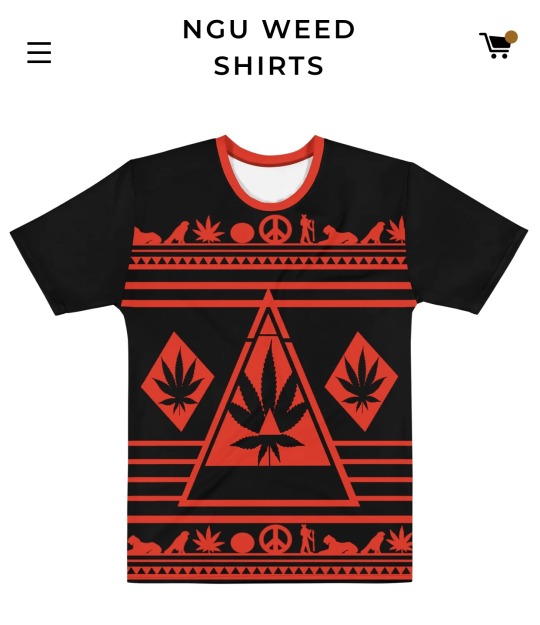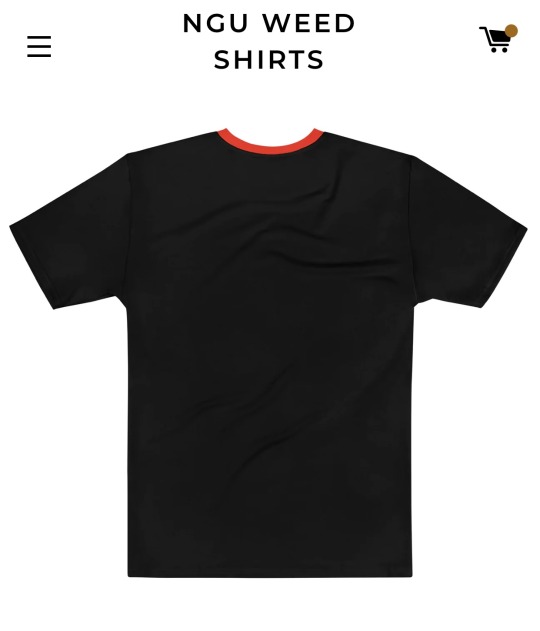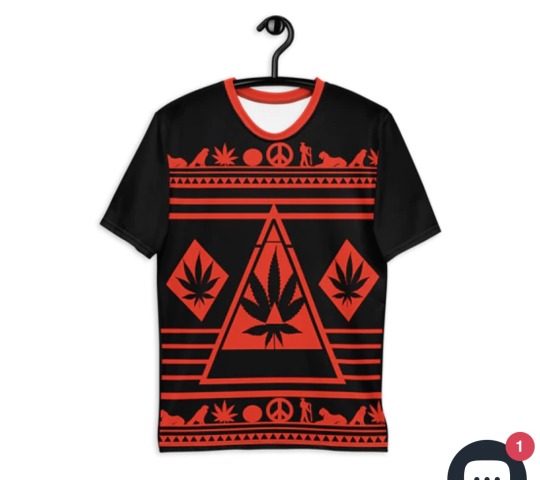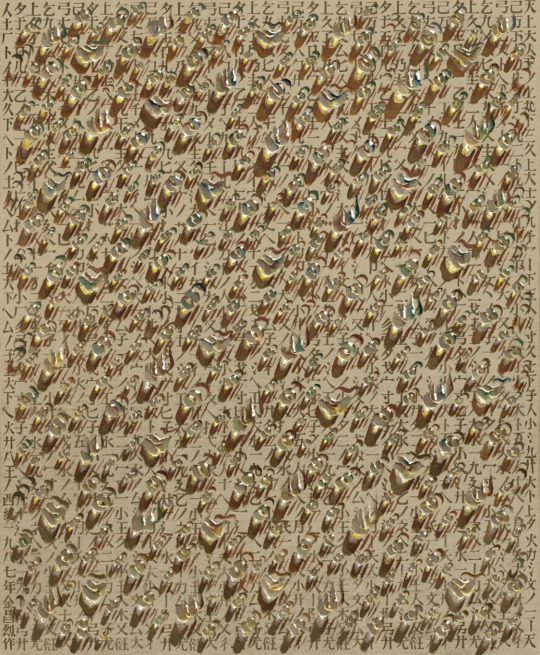#hemp clothing
Explore tagged Tumblr posts
Text



#weed shirts#marijuana#joints#thc#blunts#weed#hightimes#life#420#stoner#hemp clothing#clothing#cannabis#Shirt
2 notes
·
View notes
Text
This Hemp And Medical Cannabis Desk Calendar will add high style to any room. It sells for $19.37 (the year marijuana was outlawed). Please share it if you like it.
#hemp#cannabis#marijuana#war-on-drugs#medical marijuana#industrial hemp#medical cannabis#growing cannabis#cannacommunity#cannabis culture#cannabis community#cannabis seeds#cannabis cultivation#cannabis cup#cannabis dispensary#weedlife#cannabis strains#cannabiscommunity#weed community#indica#hemp.#hemp for victory#hemp clothing#global marijuana march#marijuana reform#marijuana laws#marijuana seeds#marijuana dispensary#marijuana legalization#marijuana strains
0 notes
Text
#Hand embroidery#Embroidery designs#Organic clothing#Sustainable fashion#Floral embroidery designs#Geometric embroidery#Custom embroidery#Traditional wear embroidery#Eco-friendly clothing#Saree embroidery#What are the best hand embroidery designs for organic clothing?#How can I incorporate floral embroidery into sustainable fashion?#What is the difference between traditional embroidery and eco-friendly embroidery?#Why is hand embroidery important in sustainable fashion?#Where can I find custom embroidery services for organic garments?#What materials are best for organic clothing with hand embroidery?#How do I choose the best embroidery design for sarees?#What are the benefits of using geometric embroidery in minimalist fashion?#How does hand embroidery promote eco-conscious fashion?#What are some popular nature-themed embroidery designs?#Organic cotton clothing#Hemp clothing#Bamboo clothing#Custom embroidery on accessories#Minimalist fashion embroidery#Sustainable accessories#Hand embroidery for outerwear#Natural dye clothing#Ethical fashion practices#Handmade fashion
0 notes
Text
Is Hemp Clothing Suitable for All Climates? Discover the Facts.
All climates can benefit from the adaptable and ecological nature of hemp clothing. In warmer weather, it wicks away moisture and is breathable; in colder weather, it provides adequate insulation to keep you warm. Hemp is useful in unexpected rain since it dries rapidly and doesn't grow mold, even if it's not waterproof. Because of its resilience, which guarantees long-lasting wear and reduces waste, it is an eco-friendly option. As hemp takes longer to soften and may need to be layered in really cold weather, it's a dependable, eco-friendly fabric that becomes better with age. Growing in popularity, hemp makes a stylish accent to any wardrobe. Accept the advantages of wearing clothing made of hemp—it's better for the environment and for you.
0 notes
Text
Why is Hemp Fabric Clothing Best for Skin?

In a world where fashion trends are ever-evolving, consumers are increasingly seeking clothing that not only makes a style statement but also takes care of their skin. One such trend that has been gaining momentum is the use of hemp fabric in clothing. This fabric, derived from the hemp plant, is making waves in the fashion industry for its numerous benefits, especially its positive impact on the skin. In this article, we will delve into the reasons why hemp fabric clothing is good for your skin.
The fashion industry is not only about looking good but also feeling good. Hemp clothing offers a unique combination of style, comfort, and skin-friendly properties that make it an excellent choice for fashion-conscious individuals who prioritize their skin’s health.

What is Hemp Fabric?
Before we delve into the benefits, it’s essential to understand what hemp fabric is. Hemp fabric is derived from the fibers of the hemp plant (Cannabis sativa). It’s one of the most durable and versatile natural fibers, making it an ideal choice for clothing.
Read More...
#hemp#hemp fabric#hemp clothing#hemp t shirt#fashion#sustainable fashion#organic clothing#t shirt#online clothing store for men#menfashion
1 note
·
View note
Text
Eco-friendly t-shirts in India offer a stylish and sustainable alternative to conventional clothing. Crafted from organic cotton or hemp, these t-shirts prioritize ethical production, reducing their environmental footprint. With comfort, durability, and eco-consciousness at their core, they empower consumers to make responsible fashion choices. Join the movement towards a greener wardrobe and a cleaner planet with eco-friendly t-shirts in India.
0 notes
Text
The Remarkable History of Hemp Fibre and Pulp Paper

Introduction
The history of paper is as diverse and fascinating as the countless texts that have been printed on it. From ancient scrolls to modern books, paper has been a critical medium for preserving knowledge, art, and culture. One of the most remarkable chapters in this history is the story of hemp fibre and pulp paper. This article delves into the incredible role that hemp played in the development of paper, from its origins in ancient China to its widespread use in Europe and America.
Hemp's Early Beginnings in Papermaking
The use of hemp in papermaking dates back to the 1st century A.D., when the Chinese first developed the process. Hemp paper was not only more durable than the papyrus used by the Egyptians, but it was also cheaper and easier to produce. This innovation allowed the Chinese to develop an extensive written record, which contributed to their advancements in science, technology, and culture.
The Spread of Hemp Paper to Europe and America

As trade routes expanded, the art of hemp papermaking spread across Asia and eventually reached Europe in the 12th century. By the 15th century, hemp paper was the preferred choice for many important texts, including the Gutenberg Bible. Its durability and quality made it the ideal material for Bibles, maps, paper money, stocks, bonds, newspapers, and even early drafts of the Declaration of Independence.
Hemp paper continued to be widely used in Europe throughout the 16th and 17th centuries, with notable works such as Rabelais' Pantagruel and the King James Bible being printed on it. In the 19th century, authors like Mark Twain, Victor Hugo, Alexander Dumas, and Lewis Carroll also relied on hemp paper for their literary masterpieces.
Hemp Paper in Colonial America
In colonial America, hemp paper was a valuable resource. The colonists used discarded sails and ropes made of hemp to produce paper, recycling materials that would have otherwise gone to waste. They also used worn-out clothes, sheets, diapers, curtains, and rags made from hemp and flax fibres to create paper.
This practice of recycling hemp materials not only demonstrated the thriftiness of the colonial Americans but also contributed to the longevity of their written records. Hemp rag paper was the highest quality and longest-lasting paper ever made, capable of withstanding wear and tear for centuries. In fact, many U.S. government documents were written on hempen rag paper until the 1920s.
The Impact of Hemp Paper on Knowledge and Science
The widespread use of hemp paper played a significant role in the dissemination of knowledge and the advancement of science. In Asia, the durability of hemp paper allowed for the preservation and sharing of knowledge across generations. This helped to establish the region's reputation for superior scientific understanding compared to the West.

In Europe, however, the Roman Catholic Church's restrictions on reading and writing hindered the spread of knowledge for centuries. This period, known as the Dark Ages, saw the suppression of books and other written materials, which stifled intellectual progress. Despite these challenges, hemp paper remained a vital medium for preserving and sharing knowledge throughout Europe and beyond.
The Decline of Hemp Paper
By the late 19th century, the use of hemp paper began to decline. The introduction of wood pulp paper and the rise of the timber industry led to a shift away from hemp-based products. Although hemp paper was more durable and environmentally friendly than wood pulp paper, it was unable to compete with the cheaper and more readily available alternative.
Conclusion
The history of hemp fibre and pulp paper is a testament to the ingenuity and resourcefulness of human civilisation. From ancient China to colonial America, hemp paper served as a critical medium for preserving and sharing knowledge, art, and culture. Although its use has waned in recent times, the story of hemp paper remains an essential chapter in the annals of human history. Today, as we face growing concerns about sustainability and environmental impact, perhaps it is time to revisit the remarkable potential of hemp paper and once again harness its incredible qualities for a brighter future.
#hemp#cannabis#cbd#hemp paper#hemp clothing#hemp fibre#cannabishistory#future#research#feelgreatagain#budandtender
1 note
·
View note
Text
no but genuinely I lose a little more patience for people who won't wear wool, leather, silk, or fur every day that I live in a world where plastic is increasingly the only damn kind of clothing you can find (or the only kind of fabric for sewing, even)
obviously, animal cruelty is horrible. I believe that even industries that rely on the deaths of animals should make their lives as good and their ends as humane as possible. and many of these industries need tighter environmental regulations on their production practices- some of the chemicals involved are highly toxic and ill-controlled at times
but at some point, you have to wake up to the fact that the only alternative we've found to date is destroying our planet
it's all plastic. and plastic is horrible for the world- the environment, humans, and especially animals. how cruelty-free is it to cause mass habitat loss? or climate change that disrupts food sources for those animals on a vast scale? how is that better than the deaths of a relatively small proportion of animals comparatively?
(and don't even start with "but pineapple leather! but cactus leather!" when those are still basically plastic due to heavy plastics use in their production processes. there is currently no non-plastic alternative to most animal-based textile products)
I've always tried to keep in mind that we all have to decide where our line is, that we all consume and there's no way of living in this world that doesn't take something from it. that for me, plastic clothing is to be avoided as much as possible, and for others, animal clothing products are to be avoided as much as possible. that the choice is equally valid
but I'm having a hard time seeing it as valid anymore when it just feels like trying to push the unpleasant part away from yourself so you can pretend your choice has no negative impacts. you're not wearing animal skin (or wool that an animal didn't even die to produce), so surely your way of doing things is better! no animals were harmed in the making of your outfit!
except. they were.
they and all the rest of us.
#fuck plastic#except for medical purposes#textiles#capitalist hellscape#(because companies use 'going cruelty-free' as an excuse to make their entire lineup a cavalcade of plastic)#textile waste#plastic waste#'just wear cotton or linen or hemp!' I mean I do but also#I live in New England#good luck with that when winter comes around#just bought a wool mantle with a fur-trimmed collar (yes it's vintage fur) from a friend and I fully expect to get use out of it soon#I just want to be able to buy Real Clothing (ie Not Plastic)#I can for now but. how much longer will I be able to?
1K notes
·
View notes
Text
when items which claim to be made of linen are like "hand wash gentle only do not use machines" it's soooo. guys linen is like. the durable fiber. I should be able to fucking boil this and hit it with rocks biweekly. you are doing something wrong
#RED FLAG AS HELL GUYS#i feel like this is bc its considered Luxury or some shit now?#ITS FLAX. ITS. I SHOULD BE ABLE TO PUT THIS IN. A ROCK TUMBLER#what if my other beautiful wife hemp was more accessible and widely used in clothing ... imagine...#WE COULD HAVE IT ALL#THE PLANET IS WARMING LET PEOPLE WEAR HEMP OKAY#SHHHH NO MORE PLASTIC ONLY HEMP#it wouldn't have to be fiber special interest hour so often if people were not so frequently wrong about fibers
2K notes
·
View notes
Text
#hemp clothing#marijuana#weed#thc#t shirt#cool shirts#hightimes#clothes for sale#cannabiscommunity#blunts#smoke
0 notes
Text






Great example of everyday noragi (work clothes, worn by farmers for ex.) from Taisho period. Note the makisode sleeve shape, offering freedom of mouvement!
You can see the close-up of the weave, made from asa (bast-fiber like hemp or linen) and kamiyori (twisted paper thread). Despite its "rugged" materials, weave is delicately interlocked with regular black stripes.
The coat also presents geometrical sashiko (white quilting), both reinforcing easily worn areas (collar, hems, inner center back), and decorating the garment.
PSA for writers: please please please don't put characters doing manual labour in "silk" kimono. I'll be forever grateful ;)
#japan#fashion#kimono#fashion history#noragi#work clothes#farmers#asa#hemp#linen#kamiyori#paper thread#sashiko#Japanese quilting#taisho period#着物
1K notes
·
View notes
Text




🌺💖🪷💨
#me#after work#cannibalgh0st#my pics#stoner stuff#weed smoke#march#2024#pink vibes#hemp wick#blue eyeliner#sunlight#natural light#belly button piercing#latina#Aquarius#comfy clothes#wavy hair#red hair#weed#bud#medical cannabis
176 notes
·
View notes
Text
Is Hemp Clothing Suitable for All Climates? Discover the Facts.

Most people know hemp as just marijuana. But most folks are sadly unaware that this versatile plant comes with a whole host of health benefits, even helping to fight diseases like cancer. So, if hemp clothing can have such a positive effect inside our bodies, can you imagine what it could do as a natural, sustainable alternative to chemically processed fabrics and textiles? Have we got your attention then? If so, let’s dive right in!
So, What’s the Big Deal with Hemp?
First things first—why is everyone buzzing about hemp fabric? Is it just a trend, or is there something genuinely special about this plant?
Hemp is a natural fiber, and it’s been around for, oh, just about 10,000 years. No biggie. People have used it for everything from ropes to sails to—you guessed it—clothing. The plant itself grows quickly and requires less water and fewer pesticides than other crops like cotton. So, not only is it good for you, but it’s also great for Mother Earth.
But let's get down to the nitty-gritty. Can you really wear hemp clothing in all climates?
Read More ...
0 notes
Text

Kim Tschang-Yeul: Water Drops, 'SH87033' (1986)
#kim tschang yeul#kim tschang yeul archive#water drops#SH87033#1986#paintings#illustrations#hemp cloth#korea
159 notes
·
View notes
Text

Organic hemp t-shirts are the ideal choice for those who prioritize both comfort and sustainability. Grown without synthetic pesticides or fertilizers, organic hemp reduces environmental harm. These t-shirts offer exceptional durability, breathability, and natural UV protection. Embrace ethical fashion with garments that are gentle on the planet and gentle on your skin. Choose organic hemp t-shirts and make a statement for a greener future.
0 notes